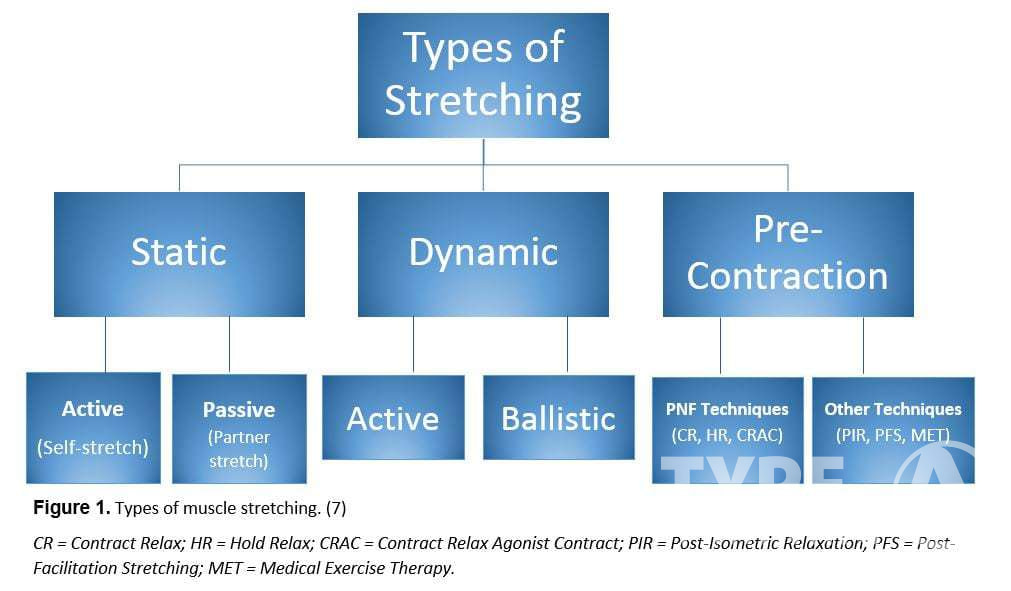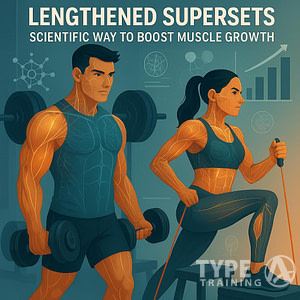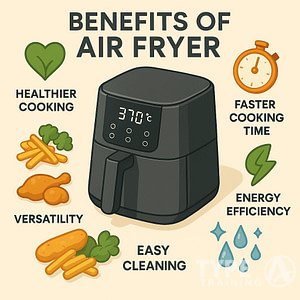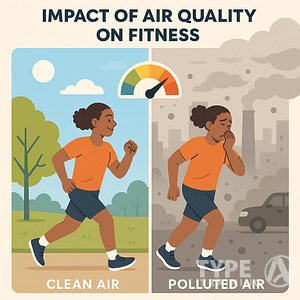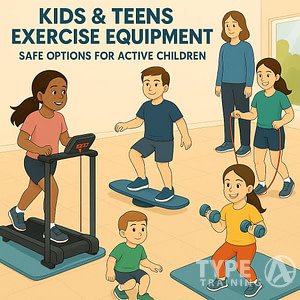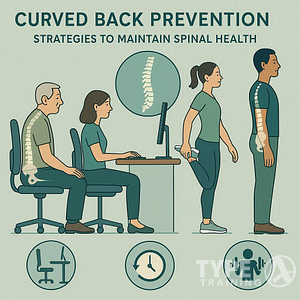Engaging in a total body stretch can be transformational, impacting not just your physical state but also providing mental clarity and stress relief.
By embarking on a stretching routine, you may notice improvements in your flexibility and mobility. These improvements can enhance the quality of your day-to-day activities and overall well-being.
These enhancements are especially beneficial if you’re dealing with stiffness or spend many hours in a sedentary position.
Popular posts:
Your stretching journey can introduce you to various techniques and tips that suit different fitness levels and goals.
Whether incorporating a sequence of stretches into your daily routine to maintain general health or pursuing specific stretches that target common areas of tightness, you have the ability to personalize your approach.
It’s important to marry consistency with safety and best practices to minimize the risk of injury and maximize the effectiveness of your stretching routine.
By doing so, you’ll be able to maintain and improve your muscle health over time, and contribute to a well-rounded fitness regimen.
Key Takeaways
- Full-body stretching enhances flexibility and aids in day-to-day mobility.
- A regular stretching routine can prevent stiffness and improve mental clarity.
- Adhering to safety best practices ensures maximized benefits and injury prevention.
Benefits of Stretching
When you incorporate stretching into your fitness routine, you are taking a significant step toward enhancing your flexibility. Increased flexibility means you can have a wider range of motion, which can directly influence how well your muscle groups function during physical activity.
- Increase Flexibility: Regular stretching can lead to an improvement in your flexibility, which is crucial for your overall health. This means your joints are able to move more freely.
- Enhance Athletic Performance: If you are an athlete, you will find stretching can refine your athletic abilities. Studies have shown that athletes who stretch regularly may observe an athletic performance boost due to better muscle coordination.
- Aid in Recovery: Post-exercise stretching can aid in recovery, reducing muscle fatigue and helping relieve the lactic acid buildup that causes muscle soreness.
- Mental Health Benefits: It’s not all physical—stretching can have benefits for your mental health, too. It encourages mental relaxation and can help manage stress.
- Prevent Injury: Incorporating stretching in your daily routine may help in injury prevention. Tight muscles are more prone to damage, so by stretching, you are ensuring that your muscles are more pliable and less likely to tear.
Remember, stretching isn’t just for those who participate in sports. It’s beneficial for everyone.
Whether you’re a desk worker or a manual laborer, taking the time to stretch can help maintain your body’s function and avoid the discomfort associated with muscle stiffness and joint pain.
Understanding Stretching Types
Image Credit: scienceforsport.com
When it comes to enhancing your flexibility and reducing muscle stiffness, incorporating both dynamic and static stretches into your routine is key.
Dynamic Stretches
Dynamic stretches prepare your body for movement with controlled movements. These stretches are typically performed as part of a warm-up routine to increase blood flow and muscle temperature, which can help reduce the risk of injury.
Static Stretches
Static stretches require you to stretch a muscle to its fullest extent and then hold that position for a period, usually around 15 to 30 seconds. These stretches are ideal for cooling down after exercise, as they help to lengthen the muscles that have been contracted during your workout. When performing static stretches, focus on your breathing and ensure to hold each stretch without any bouncing or sudden movements.
Passive Stretching
Involves holding a stretch position with the assistance of an external force, such as gravity, a strap, or a partner. This method helps to relax the muscles and increase flexibility by allowing the muscles to stretch without exerting effort.
Active Stretching
Requires you to use your own muscle strength to hold a stretch. This type of stretching engages the muscles being stretched, improving muscle control, flexibility, and strength. It’s often used as a warm-up to prepare muscles for physical activity.
PNF Stretching
Proprioceptive Neuromuscular Facilitation (PNF) combines passive stretching and isometric contractions. Typically, a muscle group is passively stretched, then contracted against resistance while in the stretched position, and then stretched again. This method is highly effective for increasing flexibility and range of motion.
To see each type of stretch in more detail, you can explore these guides on dynamic stretching exercises and the benefits of static stretching.
Safety and Best Practices
When beginning a total body stretch routine, your safety is paramount to prevent injury and ensure you reap the full benefits of stretching. Here are key guidelines to adhere to:
- Warm Up: Before stretching, warm up your body with light activity to increase blood flow to your muscles, reducing the risk of injury.
- Be Gentle: Start each stretch slowly and increase the intensity gradually. If you feel pain, ease back to a comfortable position.
- Maintain Proper Form: Incorrect form can lead to injury. Ensure your body is aligned correctly and that you’re not compensating by shifting into incorrect positions.
- Breathe: Proper breathing helps you relax into the stretch. Inhale deeply through your nose and exhale through your mouth.
- Use Props: A towel can be used to help you adjust your position and deepen the stretch safely, especially for hard-to-reach areas like the back and shoulders.
| Do’s | Don’ts |
|---|---|
| Do keep your back straight. | Don’t bounce during stretches. |
| Do hold stretches for at least 30 seconds. | Don’t hold your breath. |
| Do use a towel for support and grip. | Don’t stretch to the point of pain. |
- Listen to Your Body: Pay attention to your body’s signals. If a stretch feels too intense, modify it to reduce the strain.
- Consistency: Regular stretching can improve flexibility and reduce the risk of injury over time. Make it a part of your daily routine.
Stretching Techniques and Tips
Before diving into specific techniques and tips, understand that the effectiveness of your stretching routine hinges upon how you respect the fundamentals – proper breathing, relaxation, and form.
Let’s explore how you can integrate these core principles to reduce tension and enhance relaxation.
Breathing and Relaxation
Breathing:
- Inhale deeply to prepare your body for a stretch, filling your lungs completely.
- Exhale slowly as you move into the stretch, letting the breath guide you into a deeper state of relaxation.
Relaxation:
- Prioritize relaxation within each stretch to prevent adding unnecessary tension.
- Allow your muscles to ease into each position without forcing, using mindfulness to keep focus.
Proper Alignment and Form
Proper Posture:
- Your spine should maintain a neutral position, avoiding any twists or bends that could compromise a stretch.
- Ensure that each body part is correctly aligned to avoid strain and achieve optimal stretch benefits.
Habit Formation:
- Consistently practicing proper posture will help it become a habit, ingraining safe stretching techniques into your regular routine.
- Observe your form in a mirror or use feedback from a trainer to fine-tune your technique.
Major Muscle Groups Overview
In a total body stretch, it’s essential to address the main muscle groups for balanced flexibility and strength. Stretching not only improves range of motion but also promotes blood flow and recovery.
Upper Body Stretches
- Chest (Pectorals): Stretching your chest is crucial, as it’ s central to many daily movements. For a simple stretch, stand facing a corner and extend your arms out to the walls, leaning forward to stretch the chest muscles.
- Arms (Biceps, Triceps, Shoulders): Your arms are involved in most upper body activities. Tricep stretches involve reaching your hand down the center of your back, while bicep stretches can be done by extending your arm straight out, palm up, pressing gently on your fingers.
Lower Body Stretches
- Hamstrings: Located at the back of your thighs, hamstrings are often tight from sitting for long periods.A forward fold with straight legs can effectively stretch this area.
- Glutes: Your glutes are pivotal for lower body strength.A seated or lying figure-four stretch releases tension in the glutes. To do this, cross your ankle over your opposite knee and pull your thigh towards you.
Core and Back Stretches
- Core (Abdominals): The core is integral for balance and stability.A simple stretch is the cobra pose. To do this, lie on your stomach and gently lift your chest off the ground, using your arms for support.
- Back (Lower and Upper): Keeping your back flexible helps prevent pain.A cat-cow stretch targets both the lower and upper back and helps maintain spinal health. To do this, arch and then dip your back while on all fours.
Stretching Routines for Different Goals
Selecting the right stretching routine can be tailored to your specific objectives, whether you’re looking to improve overall flexibility, target particular muscles, or enhance athletic performance. The following routines cater to different goals, ensuring your stretching regimen supports your aspirations effectively.
Full-Body Stretch Routine
Incorporate a full-body stretching routine into your daily regimen to boost flexibility and relieve muscle tension. This routine should include key exercises like a hamstring stretch, to alleviate tightness in the back of the thighs, and a quad stretch to maintain muscle balance and reduce the risk of injury.
Engage in a chest stretch to open up the upper body, especially if you spend long hours at a desk. Don’t forget to include a back stretch to safeguard and enhance spinal health.
Targeted Stretching for Specific Needs
If your focus is on mitigating discomfort or improving range of motion in certain areas, targeted stretching is beneficial.
A shoulder stretch is crucial for those experiencing tightness from repetitive activities. Meanwhile, a hip flexor stretch can help ease tension resulting from prolonged sitting.
Customize your routine to include stretches like the triceps stretch for arm-intensive workouts or tasks.
Stretching for Athletic Performance
Athletes may require a specialized stretching protocol to optimize performance.
A dynamic approach, involving active movements such as leg swings, can warm up specific muscles like the hamstrings and quads effectively before activity. Post-exercise, a comprehensive full body stretch routine can aid in recovery and prevent stiffness.
Stretching exercises targeting the shoulders, chest, and back will contribute to a well-rounded athletic stretching routine, preparing you for peak performance.
Specific Stretches for Common Problem Areas
Effective stretching can target your tight hips, hammies, aching shoulders, and stiff neck, as well as bring some much-needed relief to your lower back. These stretches are designed to address your common problem areas, helping to reduce tension and enhance flexibility.
Stretches for Tight Hips and Hamstrings
Your hips and hamstrings are crucial for mobility, but they can often become tight, especially if you spend a lot of time sitting.
To target these areas, consider the Pigeon Pose, which deeply stretches the hip flexors and can be found in routines on Healthline. For hamstrings, a basic Seated Hamstring Stretch involves extending your legs in front of you and reaching for your toes, holding this position to gently stretch the muscles.
Stretches for Tension in Shoulders and Neck
Shoulder and neck tension can lead to discomfort and reduced range of motion.
A simple shoulder roll can help alleviate this tension. To do this, simply lift your shoulders and roll them backward in a circular motion. For your neck, a neck roll where you gently circle your head to loosen the muscles is an uncomplicated yet effective method described by the Mayo Clinic.
Lower Back Relief Stretches
Lower back pain is a common complaint, often linked to poor posture or prolonged sitting.
The Child’s Pose is a gentle stretch that can decompress your lower back. Alternatively, the Mayo Clinic suggests pulling one knee to your chest while lying down to feel a stretch in your lower back, providing relief and increasing flexibility in the area.
Key Benefits for Adults (seniors) Stretching
- Improves Flexibility and Mobility: Regular stretching helps maintain and improve flexibility in the lower body, which is crucial for performing daily activities such as walking, bending, and climbing stairs.
- Reduces Risk of Falls: Enhanced flexibility and muscle strength in the lower body can improve balance and coordination, significantly reducing the risk of falls and related injuries.
- Relieves Muscle Tension and Pain: Stretching can alleviate muscle stiffness and pain, particularly in the hips, thighs, and calves, which are common areas of discomfort for older adults.
- Enhances Blood Circulation: Regular stretching increases blood flow to the muscles, which can aid in quicker recovery from physical activities and reduce the risk of muscle cramps.
- Promotes Overall Well-Being: Stretching can improve posture, reduce stress, and enhance overall physical and mental well-being, contributing to a better quality of life for older adults.
Incorporating Stretching into Daily Routine
Incorporating a stretching routine into your daily life can lead to numerous benefits for both your body and mind. To ensure consistency, establishing it as a habit is crucial. Take note of the following points to seamlessly integrate stretching into your daily routine:
- Schedule Your Stretch Time: Much like any important appointment, pencil in a specific time to stretch.Mornings can be ideal for a dynamic stretching routine to awaken the body, while evenings may be more suited for static stretches to promote relaxation.
- Create a Comfortable Space: Designate an area in your home that is spacious and free from distractions. This helps facilitate a mindful and focused environment.
- Begin with Breathing: Start your routine by taking deep breaths to center your attention.This act of mindfulness can enhance the connection between body and mind during the stretching process.
- Utilize Various Techniques: Mix up your routine with different stretches to target all major muscle groups.Refer to reputable guides like Medical News Today’s discussion on a Daily full body stretches to expand your repertoire.
| Time of Day | Type of Stretch | Purpose |
|---|---|---|
| Morning | Dynamic | Activate Muscles |
| Daytime | Functional | Maintain Mobility |
| Evening | Static | Enhance Flexibility |
- Set Realistic Goals: Focus on incremental progress.
- It’s not about the duration but the consistency of the practice. Even five minutes dedicated to stretching can be beneficial, as suggested by Healthline’s Stretching Routine.
Advanced Stretching Techniques
Incorporating advanced stretching techniques into your routine can significantly enhance your flexibility and athletic performance. It’s crucial to select stretches that align with your activities and goals.
Yoga and Flexibility
Yoga is a discipline rich in advanced stretching techniques that can profoundly improve your flexibility.
Signature yoga postures, such as the Pigeon Pose and King Dancer Pose, are designed to stretch multiple muscle groups simultaneously, leading to a more holistic flexibility. For more yoga-based stretches that aim to boost your whole body’s limberness, visit 8 Best Total Body Stretching Exercises to Improve Flexibility.
Sports-Specific Stretching
Your stretching strategy should be tailored according to the sport you practice.
For example, runner’s might focus on dynamic stretches like leg swings and lunges to prep their body before a sprint. Conversely, a golfer may benefit more from static stretches that target the torso and encourage a wider range of motion for that perfect swing. If you engage in athletic activities, it’s essential to incorporate active stretching techniques that are specific to your sport’s demands.
Addressing Flexibility Challenges
When you embark on a journey to improve your flexibility, you may encounter a few hurdles.
Poor posture is one common challenge that can limit your range of motion and flexibility. It often stems from daily habits, such as sitting for prolonged periods or consistently favoring one side of your body.
To combat this, focus on stretches that open up the chest and strengthen the back to promote a balanced, upright posture.
- Chest Stretch: Stand facing a wall, extend your right arm, and place your palm on the wall.
- Gently turn away from the wall until you feel a stretch across your chest and shoulder.
- Hold for 20-30 seconds, then switch sides.
Imbalances in muscle strength and flexibility can also impede your progress. You might find that one side of your body is more flexible than the other.
Addressing these imbalances requires targeted stretches that focus on both sides equally, moving slowly and consciously to allow the less flexible areas to catch up.
- Hamstring Stretch: Sit on the floor with legs extended. Bend your right knee and place the right foot against your left inner thigh.
- Lean forward from the hips over your left leg to feel a stretch in your left hamstring.
- Hold for 20-30 seconds, then switch sides.
Hip flexibility is crucial as it affects your lower body movements and overall stability.
If you find that tight hips are a barrier, including exercises that specifically target this area can make a significant difference.
- Pigeon Pose: Start in a tabletop position, bring your right knee forward, and place it behind your right wrist.
- Extend your left leg behind you, keeping it straight, and lower your hips toward the floor.
- Hold for 20-30 seconds, keeping your body squared to the front.
Frequently Asked Questions
In this section, you’ll find concise answers to common queries about total body stretch, so you can approach your stretch therapy sessions with confidence and clarity.
What benefits does a total body stretch provide?
Engaging in a full-body stretching routine supports improved flexibility, enhances circulation, and may ease muscle tension. It can also contribute to better posture and reduce the risk of injuries.
What should one wear to a stretch therapy session?
Comfort is key in a stretch therapy session, so wear loose-fitting or stretchy clothing that doesn’t restrict movement, allowing full range of motion during the stretches.
How does stretch therapy differ from a traditional massage?
Unlike traditional massage, which involves manipulating soft tissues, stretch therapy focuses on lengthening muscles and improving joint mobility with the guidance of a professional stretch therapist.
What can one expect from their first stretch therapy session?
During your first stretch therapy session, expect an assessment of your flexibility followed by a series of stretches tailored to your body’s needs, with adjustments for comfort and maximum benefit.
How often should one engage in total body stretch sessions for optimal benefits?
Integrating stretching into your routine at least several times a week can lead to significant health improvements, though daily stretches can offer even more benefits to your flexibility and well-being.
What techniques are commonly used in the Streto stretch method?
The Streto method utilizes a blend of proprioceptive neuromuscular facilitation and dynamic stretching techniques.
These techniques safely enhance flexibility and strengthen the muscles surrounding the joints.


